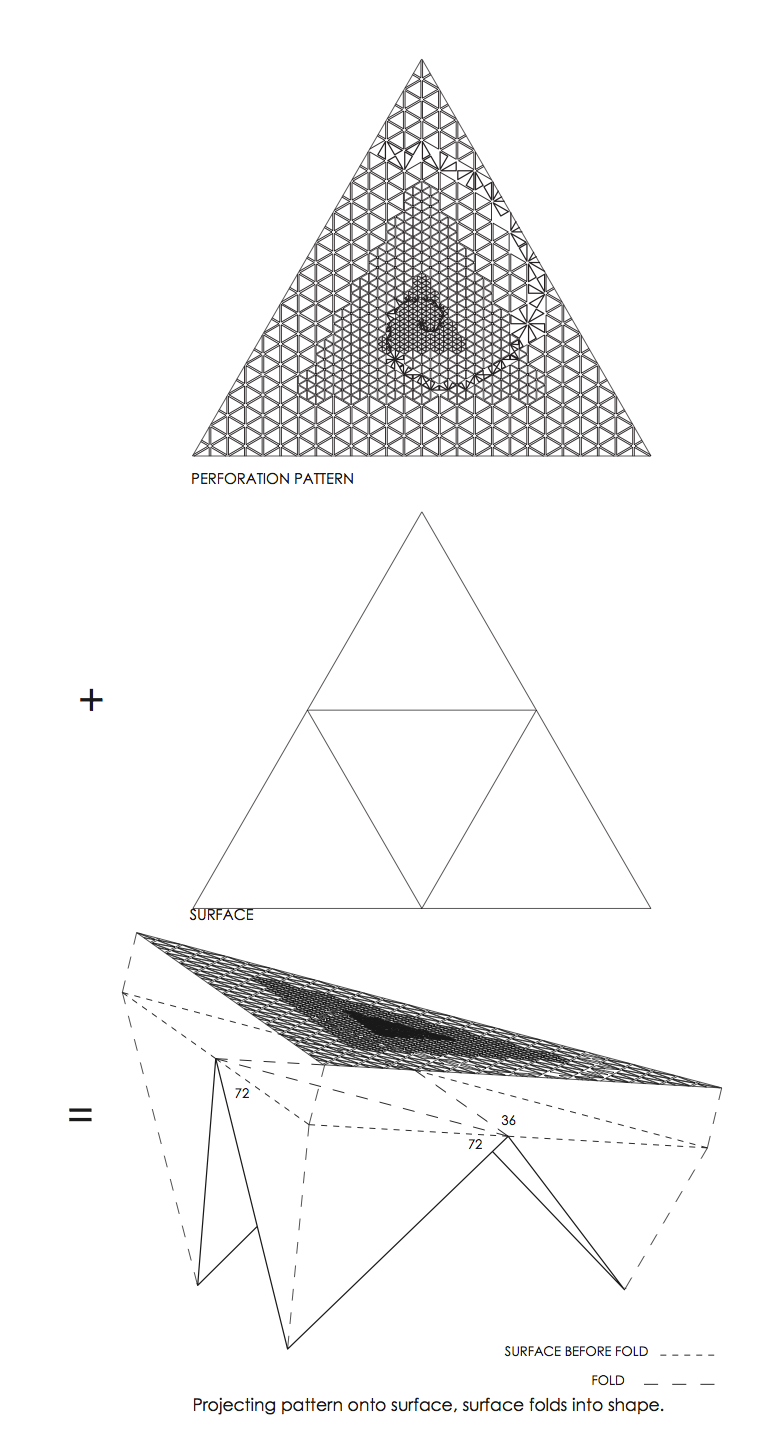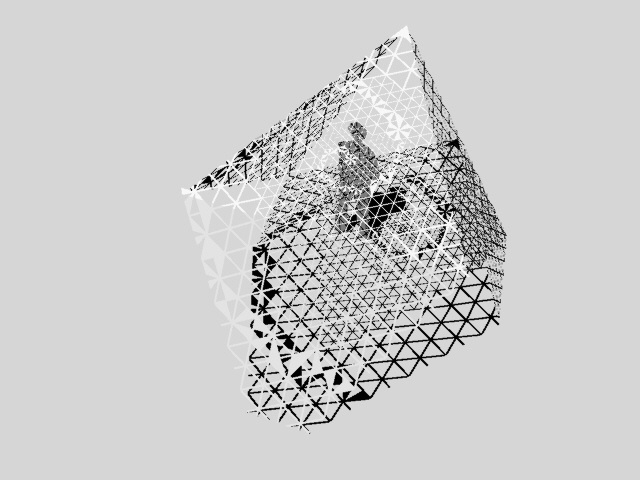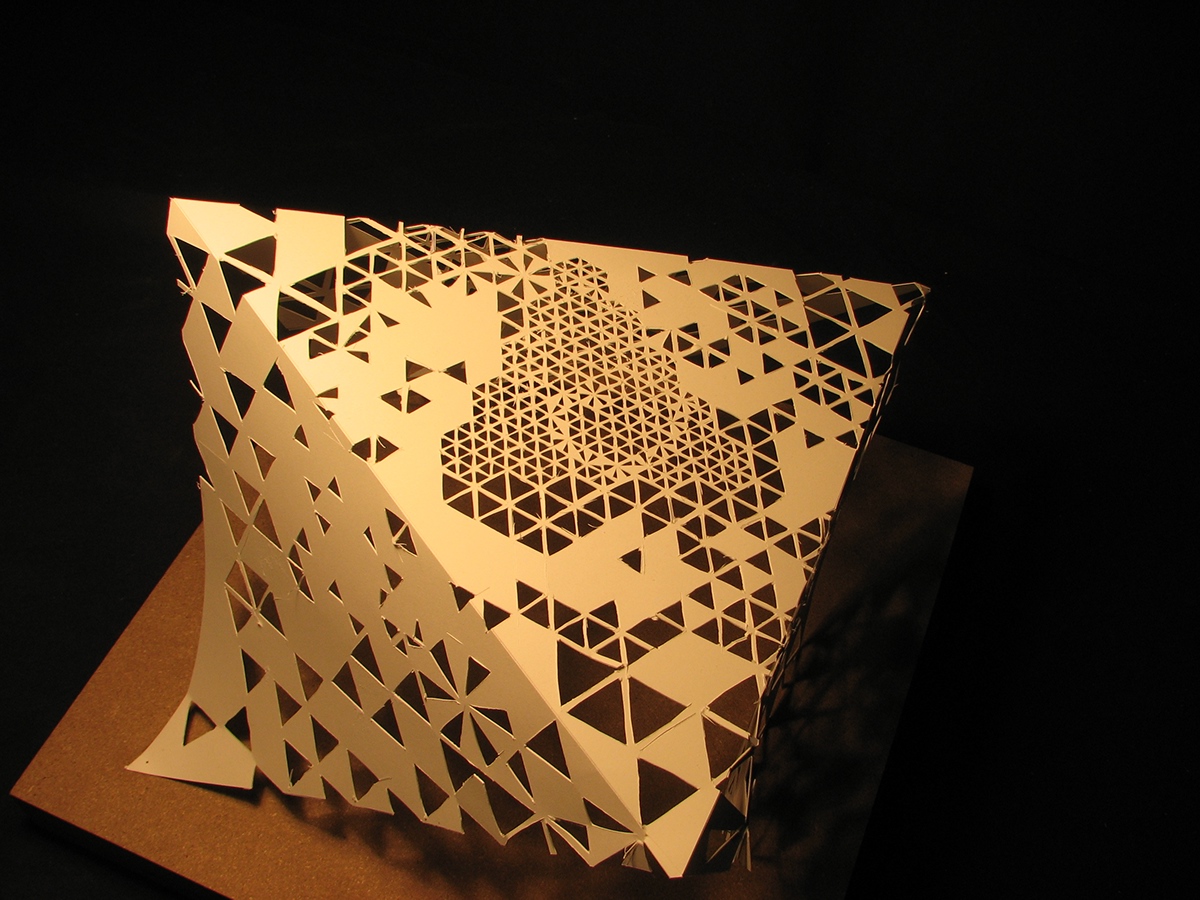M3.1: Lather, rinse, repeat...
MODULE QUESTION
What are the various ways in which a surface may be altered to create space, form, and tectonic, all while maintaining compositional intent?Compositional Techniques:
• weave, • bind
• perforate • overlap
• fold • pleat
• pinch • seal
• stitch • stretch/compress
Design Principles:
• unity, • hierarchy
• balance, • proportion
• movement, • contrast
• focus/emphasis From the 32 models, and all concentrating on one principle, focus and emphasis, and exploring four techniques, the ones that influenced my design are larger, having more impact, the smaller ones are just ideas
M3.2: S, M, L, XL
MODULE QUESTION
What are the various ways in which proportion, pattern, and aggregation can communicate and extend compositional intent?
1. aggregation
2. proportion
3. pattern
4. rhythm/repetition

This pattern was the one that really captured my attention. I liked the way the negative space was forming; it felt like a reminded that the shadow could be shaped into what I want. I have controlled on where and in what way the light can come in.
M3.2: Disciplined Surface
MODULE QUESTION
What are the various ways in which human scale, tectonic and surface can be used to simultaneously accommodate function and express intent?

For my first prototype I projected the module on a triangle. Since the module is a square bifurcated into two triangles I decided to use the triangle as the surface shape.

Front Elevation
image of model

Top View
The result of just using one size was to simple and I felt more could happen with a module like this, and many patterns could be formed. So I went back to trying to bring small, medium, and large into the design instead of just large.

I explored many different patterns with these sizes

After much pattern making I still did not find the pattern I liked. After this came my big turn. I wanted my pavilion to be outside. I saw it as conversational piece outside at a park, if I wanted to place it in nature, why not have nature influence the design
Pascal triangle and Fibonacci's golden rectangle where the two pattern I decided on. I wanted to over lay the two to form my own pattern


Pascal's triangle has a base of 13 hexagons; each hexagon has 6 isosceles triangles forming it

The ratio of the right section of Fibonacci's golden rectangle has an isosceles triangle forming with angles 36, 72, and 72

Using Pascal's triangles as a base pattern, a surface was created and manipulated using Fibonacci’s golden rectangle.

The perforation pattern Incorporated’s the hexagon units from Pascal and the ratio swirl from Fibonacci. Three small fit into one medium, and three mediums fit into one large. The large is then the base hexagon that Pascal uses. The original 13 hexagons are still there. The isosceles triangle became the over all structure base.

The perforation pattern plus the isosceles triangular surface resulted in the pavilion. Adding the pattern to the surface, then the sides where folded at the angles indicated in the rectangle ration. Determining the sides was by going from middle to middle on the sides of the triangle.

Before folding the surface the structure was symmetrical much like Pascal; but trying to incorporate Fibonacci desired to break that.

One of the sides went underground.

The shadow is unified until you the user see’s swirl. That is represent the symmetrically of Pascal and the ratio of Fibonacci.

The finale model did not look like the computer rendered model.











Having the model come out like this might have been accidental, but it created room for improvement. There are so many more possibilities now. The biggest difference was how different the shadow appeared with the perforations on the actual model verse the rendered model. After seeing the shadow here and on the render I believe the module captured what I wanted. The shadow has a since of nature but it is clearly not a shadow created by nature.
